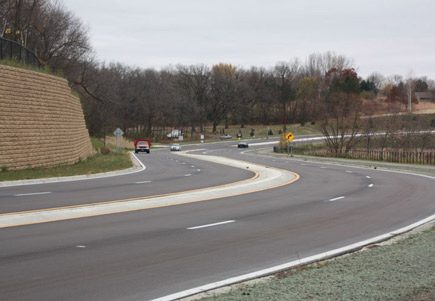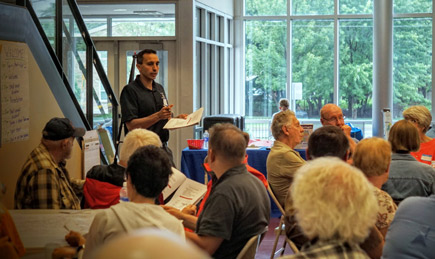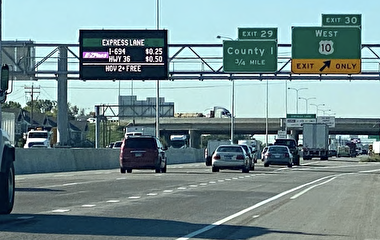Members of the public often hear news about the deteriorating state of the nation’s infrastructure, but in general they are unaware of the efforts and costs required to maintain and operate the transportation systems they rely on every day.
In a recent study, U of M researchers sought to better understand stakeholder attitudes, knowledge, and engagement about financing for local road system management. “It’s important for people to be informed and to be listened to, and to have their opinions taken into consideration in decision making,” says Guillermo Narváez, a former research associate with the Humphrey School of Public Affairs and the project’s principal investigator. “This approach very often leads to better outcomes than non-participative decisions.”
Narváez collaborated with Professor Kathryn Quick, also with the Humphrey School, for the project. The research team collected and analyzed data about the general climate of stakeholder knowledge and attitudes toward road financing. Data were collected through media analysis, case studies, interviews, and surveys of county government leaders.
Survey responses indicated that the public generally agrees on the importance of well-maintained local roads but lacks an understanding of funding and financing mechanisms. “There is limited public engagement on these issues despite the use of a variety of outreach methods, and public attendance at hearings is often motivated by opposition to a project rather than a desire to learn about it,” Narváez says.
The researchers also examined public engagement efforts in four local jurisdictions: Chanhassen, Brooklyn Park, Mille Lacs County, and Beltrami County. The researchers collaborated with public works leaders from these jurisdictions on the design, implementation, and evaluation of methods used to engage stakeholders about local road system needs. Each case study reviewed the jurisdiction’s transportation system, outreach methods used to engage the public, policy outcomes, and relevant features of the area.
Based on their analysis of the survey responses and case studies, the research team recommends a number of actions:
- Organize community dialogue based on high-quality information, impartial analysis, and thoughtful explanations of policy options.
- Use multiple communication channels for targeted outreach. Traditional methods such as newspaper announcements are no longer sufficient; new approaches such as geotargeted communications, social media, and smartphone-compatible messaging formats are needed.
- Build resources to support stakeholder participation, including accessible information (e.g., infographics) and staff capacity to conduct outreach and communications.
- Employ an inclusive process and thoughtful, timely responsiveness from public managers.
“This research was successful in building public engagement to help smaller county agencies like ours work through a project,” says Bruce Hasbargen, county engineer in Beltrami County. “It’s great to be able to share this success with others.”
The project was sponsored by the Minnesota Local Road Research Board and MnDOT.




